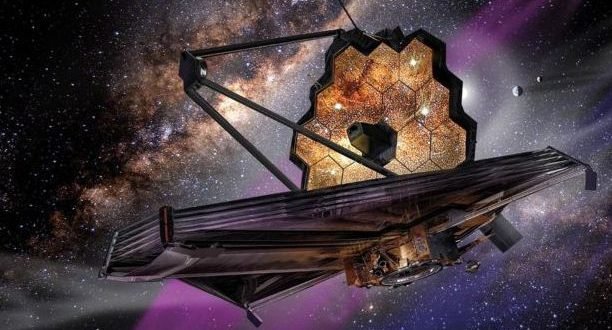The first stars in the universe have lit up about 200-400 million years after the Big Bang. Observing these very first individual stars at such an enormous distance would normally be an undertaking for any space telescope. However, with the right conditions and a bit of luck, NASA’s James Webb Space Telescope, which will be launched in May 2020, will be able to capture the light of individual stars of that first generation.
Rogier Windhorst, of Arizona State University, said: “Looking for the first stars and black holes has long been a goal of astronomy. It will give us information about the properties of the primordial universe, things that so far we have only modeled on the computer. The key will be to look for a star whose light has been distorted and amplified by the gravity of an intermediate cluster of galaxies. But not all gravitational lenses will. A normal gravitational lens can amplify light 10-20 times, not enough to make a first-generation star visible to Webb.
But if the distant star and the nearest cluster of galaxies align perfectly, the star’s light can be amplified 10,000 times or more, bringing it into the field of detectability. In these cases, the star’s light would be greatly amplified for a few months by the movement of the cluster in the sky.
The possibilities for such precise alignment are small, but not zero. Astronomers recently announced that Hubble has taken over a super-amp star known as “Icarus”. Although it was the farthest single star ever observed, it was much closer than the stars that Webb could locate. With Webb, scientists hope to find the amplified example of a star that was formed from the primordial mix of hydrogen and helium in the universe, which are called population stars III.
In addition to the first stars, astronomers also analyzed the possibility of observing growth discs around the first black holes. A similar black hole, formed by the death of a massive star, could shine if it drew gas from a companion star.
The longer an object shines, the more likely it is that it aligns with a gravitational lens. First-generation stars are expected to be massive and short-lived, withstanding for a few million years before exploding as supernovas. Conversely, a black hole that “strips” a companion star could shine up to 10 times longer, feeding on a constant flow of gas. As a result, Webb may detect black hole growth discs than primordial stars.
Astronomers calculate that an observation program pointing at different clusters of galaxies a couple of times a year throughout Webb’s life might be able to find a star or growth disk of amplified primordial black holes. Some of the best clusters have already been selected, such as El Gordo and the clusters from the Frontier Fields programme.
 MobiTechInfo
MobiTechInfo








